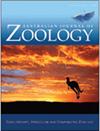Bat roosts in Tasmania
IF 1
4区 生物学
Q3 ZOOLOGY
引用次数: 0
Abstract
Mature forest is a key resource for hollow-using bats, but its importance in shaping where bats roost during breeding is not well understood. This lack of understanding limits the ability of forest managers to make informed decisions on the type, amount and spatial arrangement of mature forest to retain for bats in areas used for timber production. Using radio-telemetry, day roosts of three sympatric hollow-using bat species – the chocolate wattled bat (Chalinolobus morio), the Tasmanian long-eared bat (Nyctophilus sherrini) and the lesser long-eared bat (Nyctophilus geoffroyi) – were located in two forested landscapes in south-eastern Tasmania, Australia. By radio-tracking 24 bats in the maternity season, 76 roosts were located, with interspecific variation in roosting preferences evident at the roost, patch and landscape scale. Maternal colonies showed a clear selection for roosting in areas of the landscape containing the highest availability of mature forest, with smaller patches, strips and individual trees used to a greater extent for roosting in the landscape where mature forest was scarce. These findings showcase the importance of retaining mature forest at multiple spatial scales for hollow-using bats.蝙蝠栖息在塔斯马尼亚
成熟的森林是中空蝙蝠的关键资源,但其在塑造蝙蝠繁殖期间栖息的地方方面的重要性尚不清楚。这种缺乏了解限制了森林管理者就木材生产地区为蝙蝠保留的成熟森林的类型、数量和空间安排作出知情决定的能力。利用无线电遥测技术,在澳大利亚塔斯马尼亚东南部的两处森林景观中发现了三种同地栖息的空心蝙蝠——巧克力垂蝠(Chalinolobus morio)、塔斯马尼亚长耳蝙蝠(Nyctophilus sherrini)和较小的长耳蝙蝠(Nyctophilus geoffroyi)。通过对产卵季节24只蝙蝠的无线电跟踪,确定了76个栖息地,在栖息地、斑块和景观尺度上存在明显的种间差异。母蚁群明确选择在成熟森林资源最丰富的景观区域栖息,在成熟森林稀缺的景观中,更大程度上使用较小的斑块、条状和单株树木栖息。这些发现显示了在多个空间尺度上保留成熟森林对空心蝙蝠的重要性。
本文章由计算机程序翻译,如有差异,请以英文原文为准。
求助全文
约1分钟内获得全文
求助全文
来源期刊
CiteScore
2.40
自引率
0.00%
发文量
12
审稿时长
>12 weeks
期刊介绍:
Australian Journal of Zoology is an international journal publishing contributions on evolutionary, molecular and comparative zoology. The journal focuses on Australasian fauna but also includes high-quality research from any region that has broader practical or theoretical relevance or that demonstrates a conceptual advance to any aspect of zoology. Subject areas include, but are not limited to: anatomy, physiology, molecular biology, genetics, reproductive biology, developmental biology, parasitology, morphology, behaviour, ecology, zoogeography, systematics and evolution.
Australian Journal of Zoology is a valuable resource for professional zoologists, research scientists, resource managers, environmental consultants, students and amateurs interested in any aspect of the scientific study of animals.
Australian Journal of Zoology is published with the endorsement of the Commonwealth Scientific and Industrial Research Organisation (CSIRO) and the Australian Academy of Science.

 求助内容:
求助内容: 应助结果提醒方式:
应助结果提醒方式:


